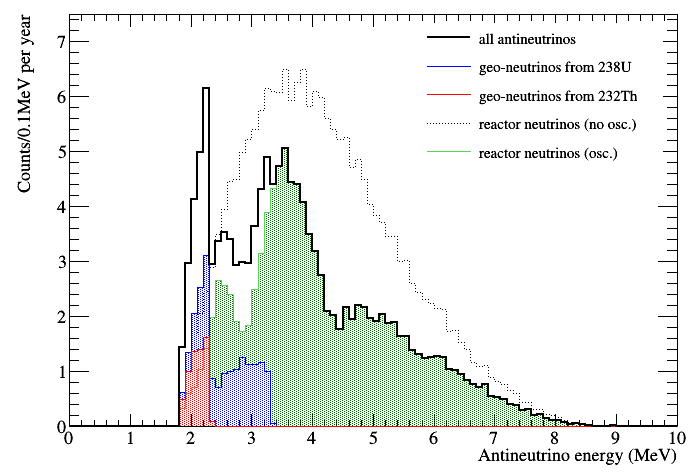Science Programme
The SNO+ Experiment is used to investigate a large suite of physics phenomena.
Find out more about our current active research interests here.
Geo-Neutrinos
In addition to those produced from reactors, anti-neutrinos are also released during the beta decay of radioactive isotopes in the Earth's mantle and crust, particularly from 40K and isotopes in the decay chains of 238U and 232Th. These "geo-neutrinos" are interesting from a geoscience point of view because they can tell us the amount of radioactivity present deep inside the Earth. This radioactivity is thought to be responsible for a large fraction (~50%) of the heat produced in the Earth. As such, measuring geo-neutrinos will play an important role in determining how the interior of the Earth has cooled over time and how it will behave in the future.
The KamLAND experiment (in Japan) was the first to detect geo-neutrinos in 2005, and have since have updated their measurement. An independent measurement has also been made by the Borexino experiment (in Italy). Located in Canada, SNO+ is located in an excellent position for a third geo-neutrino measurement in the world. Not only would it be the first measurement in the Western Hemisphere, the local geology around SNOLAB has been extensively characterized due to a legacy of major mining activity in the surrounding region. Data from the SNO+ geo-neutrino measurement can be combined with those from KamLAND and Borexino in a global analysis to infer the abundance of uranium and thorium deep in Earth's mantle.
The expected geo-neutrino energy spectrum in SNO+ is shown here:
